First steps of the CARMELO network
(Cheap Amateur Radio Meteors Echoes LOgger)
Lorenzo Barbieri, Gaetano Brando, Paolo Fontana, Silvana Sarto
AAB (Associazione Astrofili Bolognesi)
barbieriofiuco@gmail.com
The CARMELO network project, after a year of uninterrupted activity, proved to be reliable and gave us a glimpse of an unpredictable result: the reconstruction of meteor trajectories. After an analysis of the current situation and the models, the first results are shown, especially on simultaneous registrations. These radio recordings, compared with the optical counterpart, demonstrate how much the CARMELO instrument can be exploited for trajectory reconstruction. Finally, the construction of a “local” network linked to its own transmitter is proposed, a solution to overcome the limits imposed by the GRAVES radar.
1 Description
The CARMELO network for observing radio meteors is made up of RDS (Radio Defined Software) receivers spread everywhere in the world and all operating with the same standard. The characteristics of the CARMELO receiver are illustrated here .
As described in the cited article, each receiver performs the fast Fourier transform on each meteor it observes, recording a file which allows the reconstruction of the radioelectric power waveform of the meteor echo.
Unlike the kind of listening for echoes carried out so far by amateur astronomers all over the world, CARMELO is not based on the audio output of an analog receiver but directly measures the radioelectric power of the meteor echo analogously to a real radar. Its operation is completely automatic and the unique standard means that every measurement made anywhere in the world can be compared with all the other measurements made by other receivers.
The CARMELO receiver can tune into any frequency, for this purpose it is sufficient to write the value of the carrier to be listened to in the appropriate receiving station data file. The frequencies used so far are 143 MHz for receivers in Europe and 52 MHz for receivers in the USA.
The observational data produced by each individual observer is transmitted in real time to the “Astrofili a Bologna/CARMELO)” server and represented with suitable diagrams. Both the presentation of single events and the hourly rates can be consulted in detail online. The past data history can be seen here .
After a few years of analogue radio listening with the RAMBO system our conviction was that the only possible observation using meteor scatter was the investigation of the hourly rate and this way the observation of meteor showers behavior, year by year, of both, day and night time.
The first results of the CARMELO network have shown us that this project could also establish the trajectories and thus, if this goal will be achieved the meteoric radiants could be determined.
To date, the network is made up of some receivers in Europe and a few in the USA , the network has been recently established and should be expanded both in number of observers willing to collaborate, and in the coverage of the territory.
2 Observations from Italy
No transmitter dedicated to listening for radio meteors is currently available in Italy. For this reason, the Italian observers use the French Graves transmitter operating as a south-facing radar transmitter on the 143 MHz frequency (Figure 1).
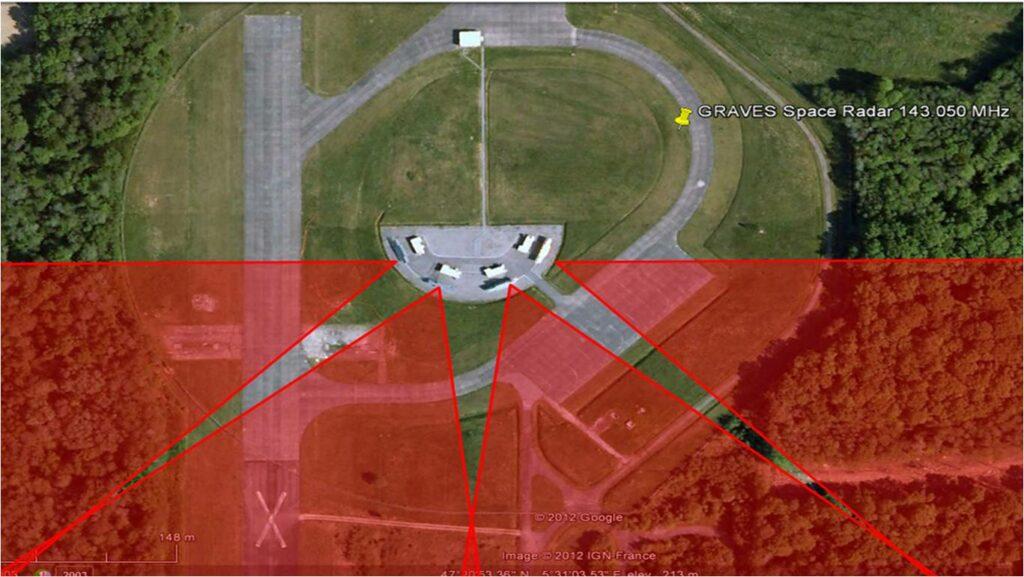
Figure 1 – The French Graves transmitter operating as a south-facing radar transmitter.

Figure 2 – A strong meteor echo with a long duration. The transmitter sweeping behaviour is clerly visibile.
As will be described later, this solution involves some limits which penalize listening, making the interpretation of the results more complicated. The average distance between this transmitter and the receivers located in Italy exceeds 500 km.
The wave transmitted by Graves sweeps southern Europe at a fixed frequency generating an alternating presence and absence of the radioelectric signal clearly visible in the plot in Figure 2. This means that for at least 50% of the time the transmission is not present and therefore at least half of the meteor radio echoes are lost. Furthermore, the sweeping of the radar can lead to the fact that a meteor trail gets the signal only after its appearance, or vice versa, so that its echo disappears from the reception before its dissolution.
Another feature of Graves is the fact that it transmits on a too high frequency, at least three times the frequency normally used to listen for meteor radio echoes. The evidence for this limit is shown by comparing the American data with the Italian data. If the hourly rates are compared, it can be seen that the number of meteors received per observer in the USA is at least three times larger than that in Italy (Figure 3).
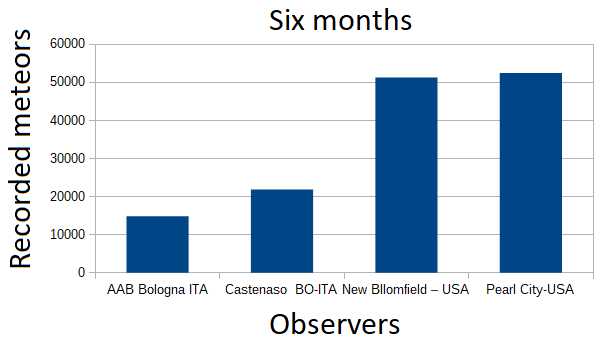
Figure 3 – Comparison beetween 50 Mhz and 143 Mhz receiving systems.
It should be noted that the transmitter used in the USA is a television transmitter, i.e., a broadcaster which in all probability uses antennas with a flat radiation lobe, aimed essentially at ground reception and certainly not aimed at the sky, nevertheless the efficiency of the reception on this frequency is evident.
Hence the need to create a transmitter on 50Mhz with upward transmission in Italy too, similarly to what has already been done in Belgium, Japan and recently also in Great Britain.
While waiting for this solution, it would be interesting to test the CARMELO system also in some of these countries for a first comparison with the Italian data which we illustrate in the next section.
3 First results
The CARMELO system allows the creation of a database in which all the data related to each single reception are automatically recorded, in addition to the data relating to each single receiver. The information in this database include location, latitude, longitude, Tx frequency, noise floor (dB), antenna, gain (dB), sampling duration (ms), meteor duration (ms), max power (snr), angle of view covered by the antenna (°), identifying sign of the receiving station, identifying color of the receiving station and instant of meteor beginning (in milliseconds).
Querying this database allows statistical analysis and comparisons with observations made in different ways, for example visual observations, and this has allowed us to compare our data with the Global Meteor Network (GMN) database based on the automatic observation of meteors using video cameras.
Each single recording allows us to analyze the waveforms with graphic representation of both amplitude (signal to noise ratio of the received electromagnetic field) and the frequency (Figure 4). It is also possible to superimpose receptions of the same meteor by different observers. An initial evaluation of CARMELO’s potential can be obtained from the representation of the waveform generated by a fireball with a duration of several seconds (Figure 2) which shows the sweeping frequency of the Graves transmitter.
As mentioned, CARMELO performs the fast Fourier transformation for each sampling performed; the duration of each sample varies from 30 to 33 milliseconds. The temporal resolution of the system is therefore equal to this value and the system exclusively observes overdense meteors, due to the fact that underdense meteors have a duration shorter than the sampling time (Figure 5).
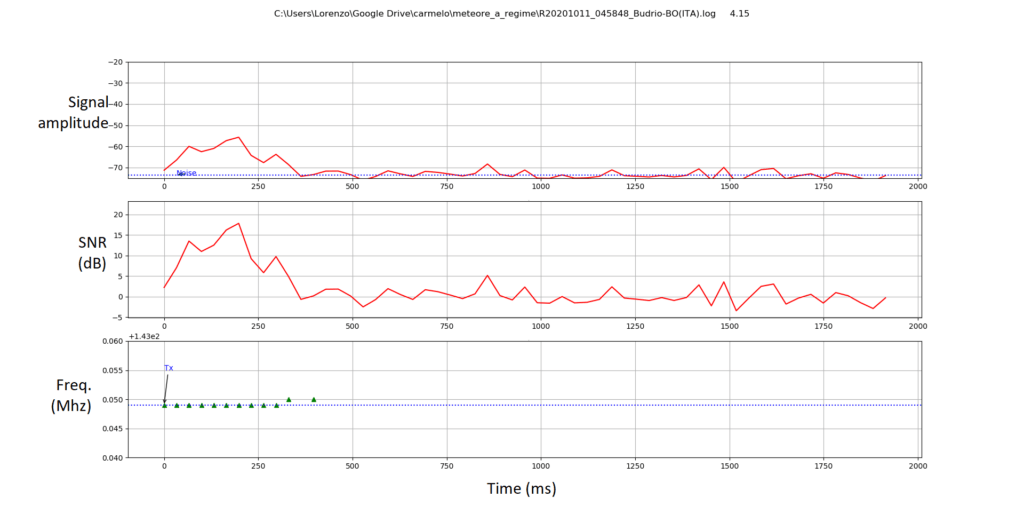
Figure 4 – Graphical representation of a CARMELO recording. Note in the third graph that, when the meteor echo ends (SNR goes to zero) the frequency (random) of the noise always falls off the scale.

Figure 5 – Meteor event recorded on 2022 October 19 at 11h47m01s UTC by observer San Giovanni in Persiceto BO, Italy.
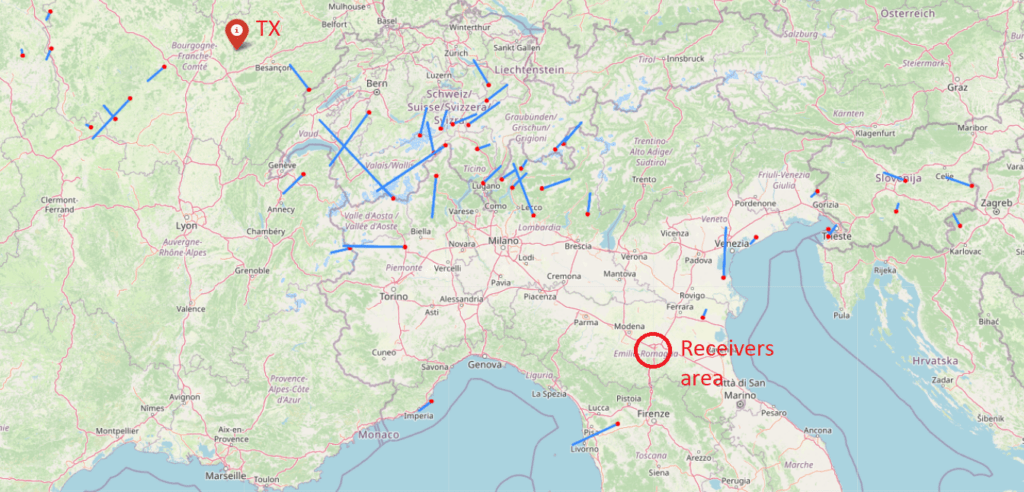
Figure 6 – A few dozen meteors recorded by CARMELO projected on the ground of the corresponding optical counterparts? The blue segments indicate the direction, the red dots are the beginning of the meteors.
This makes it more suitable for observing meteor showers and less suitable for observing sporadic meteors.
The meteors recorded in the first months of the CARMELO network in Italy show that we observe an extremely wide field of view (Figure 6). The trajectories of the observed meteors are scattered in all directions. The transmitter and the receivers cluster are located at a great distance (on average 550 km), the transmitter has radiating panels which cover a beam between 15 and 40 degrees of elevation, and the receiving antennas also have an elevation of about 30°. For these reasons the majority of the positions of the meteors are located between the transmitter and the receivers, but in some cases, it is possible to see them north of the transmitter or south of the receivers.
4 Theoretical considerations
The physics of radio meteors teach us that the reflection of radio waves in the meteor trail is specular, i.e.: the necessary condition for receiving an echo is that the angle of incidence is equal to that of reflection (Figure 7).
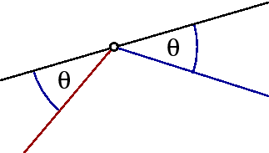
Figure 7 – Reflection of a ray of light on a mirror: the angle of incidence is equal to that of the reflection.
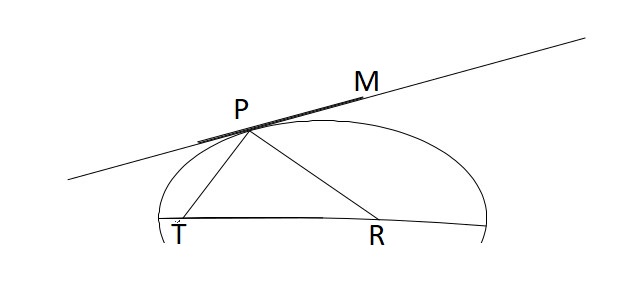
Figure 8 – Meteor tangent to the ellipsoid. T and R are in the foci.
In Figure 8 the receiver R sees the transmitter T only in one point of the mirror, as a consequence the observed signal comes from a restricted area on the meteor trail. We can approximate this area as a point, which we will call P.
Its position in space depends only on the geometry of the specular reflection. In Figure 8 the point P is identified geometrically as the one in which the path between the transmitter and the receiver is shorter. (Wislez, 2005). It lies on an ellipsoid which foci consist of transmitter T and receiver R, and the path of the meteor is tangent to this ellipsoid.
It should be noted that this point does not necessarily coincide with the point, which we will call M, in which the meteor “lights up”, the beginning point where it becomes visible for the visual observer.
A second receiver R1, placed at a different position, if it also receives the meteor echo of the same meteor, will receive it coming from a different point on the same path that we will call P1 in which the track of the meteor is also tangent to a second ellipsoid with foci T and R1, see Figure 9.
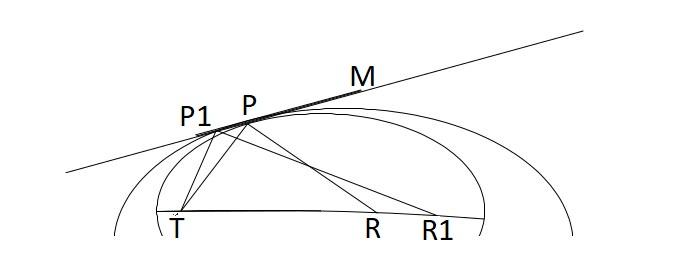
Figure 9 – Meteor tangent to the two ellipsoids. T, R and R1 are in the foci.
In the case of relatively short distances between the two receivers, the two ellipsoids differ slightly. The meteor moves along the trajectory with a high velocity reaching the points P and P1 at different times which we can call T and T1.
5 Simultaneous receptions
The Graves transmitter transmits an unmodulated continuous carrier, therefore, in reception, there are no impulses that allow us to detect the delays due to the different path taken by the reflected signal. This means that the temporal evaluation must be carried out exclusively on the delay times due to the movement of the meteor in the atmosphere.
As mentioned before, the system records data accurate to a millisecond, even if the time resolution of each single sampling requires us to consider a ΔT of plus or minus 15 ms. Synchronization between the receivers is carried out via the NTP (Network Time Protocol) system capable of guaranteeing an accuracy of less than 10 ms and therefore less than the time resolution of CARMELO.
Nonetheless we carried out a field test by measuring “artificial” meteors, i.e., generated by a portable radio transmitter with three different receivers placed a few kilometers away. The result was that 100% of the signal receiving times were identical plus or minus 15 ms ΔT.
With receivers placed in a radius of between 10 and 40 km, most of the meteors are received simultaneously by two or more receivers. We therefore set ourselves the goal of
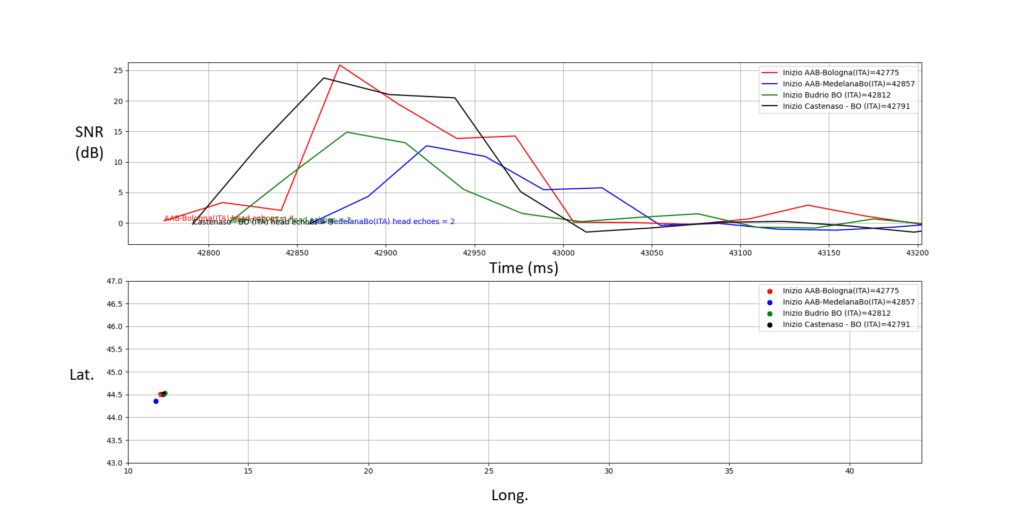
Figure 10 – In the upper part: superposition of four simultaneous receptions, in the lower part: geographical location of the receivers.
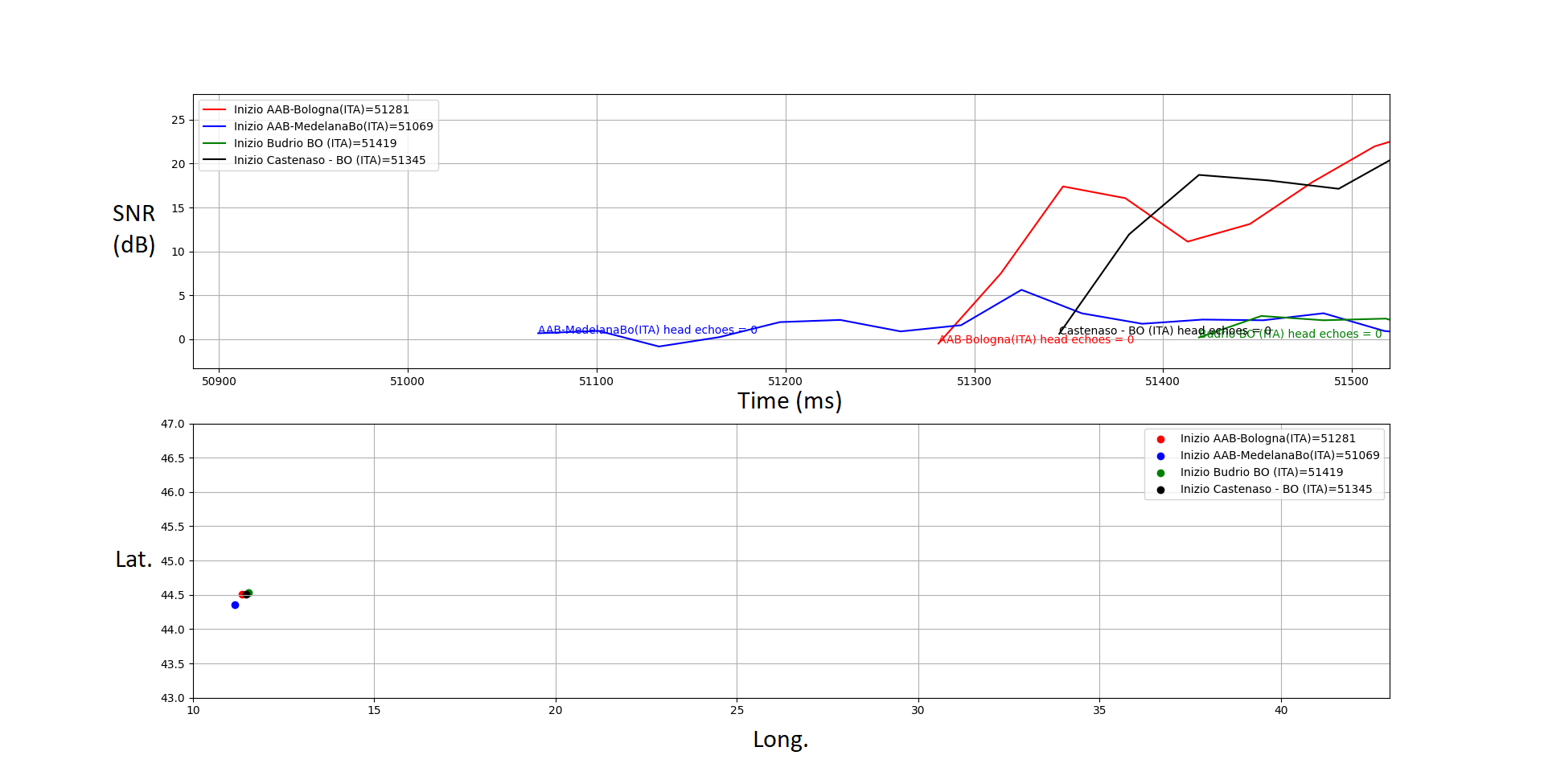
Figure 11 – Sometimes not all the waveforms have the same shape.
comparing these observations in search of clues that lead us to identify the orientation, direction and position of the meteor’s path. Each CARMELO receiver records, to the millisecond, the meteor start time, from now on: T(im); this measurement is the instant following the first two samplings in which the fast Fourier transformation detects the frequency of the carrier for two consecutive times with an amplitude in which the signal-to-noise ratio (S/N) exceeds the pre-set threshold.
In simultaneous receptions, the meteor starting time T(im) varies between one and the other reception in a range from zero to half a second. In the stacked image of the waveforms of the simultaneous recordings it is sometimes noted how the curves, although very similar, present differences, see Figure 11.
The first cause of these differences concerns the antenna gain: not all antennas are identical and not all have the same pointing or the same height from the ground. First of all, all this entails a different amplitude in the signal-to-noise ratio (S/N) but this can also cause a delay in the identification of the first instant T(im).
In some meteors an increasing front can be clearly seen, in others this is less visible. This way, the question arises how to choose which is the instant to be considered as the instant in which the meteor reaches point P, i.e., if the instant T(im) measured automatically by the CARMELO system or the instant in which the ascending of the wave front begins.
For this experience we have chosen the first hypothesis. We have taken the Italian recordings in a period from July to November 2022 into consideration by isolating all the radio meteors received simultaneously by at least three receivers. In this way it is possible to compare the start timings of receivers placed scattered in the area and therefore able to have, at least in 2D projection an infinity of combinations of possible time sequences.
Comparing the meteor start times of each single recording with the geographic position of the observers on the territory, we first of all noticed how it was almost always possible to highlight a coherence between the times and the positions. For instance, the delay times between the observers, even in the 2D approximation in projection on the ground, were arranged in a time sequence consistent with the arrangement of the receivers and these appeared almost never random.
We therefore tried to assume, for each meteor, the projection of its path onto the ground based on the delay times between one and the other. Obviously, this procedure, also based on a Python script, involves a great approximation, the greater the approximation the smaller the number of observers.
Although approximate, this method has allowed us to identify a hypothesis for the projection on the ground of which we only know the direction and orientation while we know nothing about the position. These direction and orientation hypotheses then had to be verified with visual observation. To do this it is necessary to compare the radio data with those recorded by the video cameras dedicated by astronomers and amateur astronomers to the night observation of the meteors. Our choice fell on the GMN (Global Meteor Network) database .
We know that the time in which the first luminous trace appears in the sky does not always coincide with the time in which the first reflected radio signal reaches a receiver.
From Figure 9 and from the previous paragraph it is possible to notice how the two points P and M can differ, and consequently also the corresponding timings. For the purpose of this research, this consideration is not particularly interesting and therefore we have decided to define as the optical counterparts, all those meteors of the GMN database having the starting time coinciding with those of CARMELO within a range of one second.
However, this procedure has a drawback. The temporal coincidence between the two databases does not ensure that we cannot be dealing with two different meteors, which took place at the same moment but which are located in different areas. This uncertainty may have contaminated our comparison, albeit whit a low probability.
We compared the timings of the start of the meteor calculated in the CARMELO and GMN databases with a Python script, setting as a condition, in addition to the temporary one, also the geographical limits of central Europe. The outcome of this comparison identified 46 events.
In these 46 events, 15 meteors had insufficient radio observations to be able to define a trajectory hypothesis, either because the delay times were close to zero, or because the waveforms were too different from each other.
In the remaining 31 cases we were able to define a trajectory hypothesis, at this point we were able to compare it with the ground projections of the meteors recorded by GMN .
We have defined those having roughly the same direction (more or less about thirty degrees) and the same orientation as coherent” and as inconsistent those in which one or none of these conditions was met. The result was 25 “coherent” meteors, equal to 84% and 5 “inconsistent”, equal to 16%.
6 Reception with greater distances
New observers joining the CARMELO network, placed at greater distances than those examined in the previous test confirmed that even for distances of a few hundred kilometers the differences in arrival times increase as the distance increases, while remaining consistent in timeline with a straight path.
7 Final considerations and future developments
The observations illustrated here constitute a first exclusively qualitative result, but we would like to highlight how, despite all the limitations described in the second paragraph, the possibility of exploiting the CARMELO system for the automatic identification of the direction and orientation of the meteors emerges, the first step in a search for radiants.
To further explore this path, however, it is necessary to get rid from the limits imposed by listening for the Graves transmitter signal. It is necessary to build a network of observatories spread over the territory with antennas pointing vertically in an area of some tens of kilometers around a transmitter operating on 50 MHz with vertical irradiation and circular polarization. Alternatively, it is necessary to experiment with this technique where such a network already exists.
For this reason, the availability and contribution of scientific organizations and individual amateurs to expand the network remains a crucial necessity.
References
Wislez J.-M. (2005). “Meteor astronomy using a forward scatter set-up”. Proceedings of the Radio Meteor School, pages 85–106.

